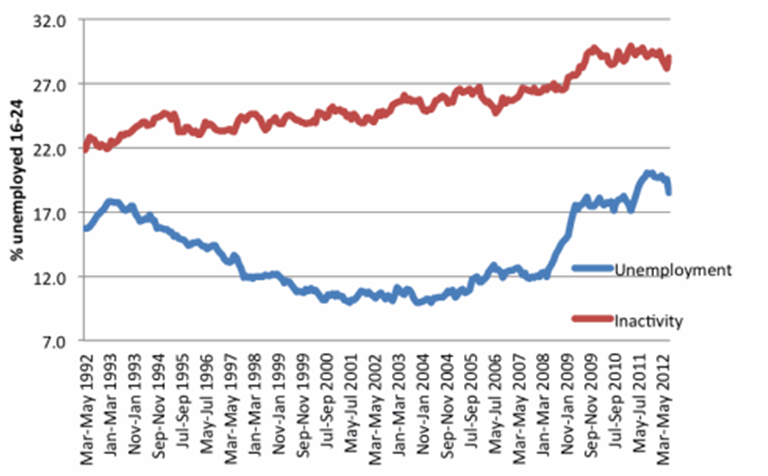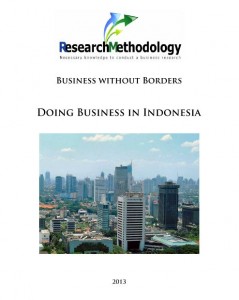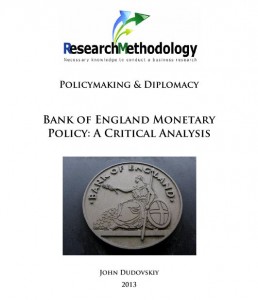
Unemployment is serious social and economic issue for the society, and unemployed individuals in many levels. Unemployment amongst young people is considered to be a special case as “young people between their required school life and their first job are very susceptible to unemployment” (Kurten, 2007, p.3). Moreover, a high level of youth unemployment has massive negative implications for the government on short-term and long-term perspectives. According to International Labour Office (2012), individuals aged between 16 – 25, who are available for work in 15 days, not currently employed, and are looking for employment opportunities in an active manner can be classified as young unemployed. However, in the UK, the age range of young unemployed individuals is specified as 16 – 24 years old. The level of youth unemployment has been consistently rising in the UK during the past several years (Figure 1). Moreover, it has been estimated that the numbers of young individuals who have not been working for more than 2 years have increased from 40,000 to more than 100,000 during the last four years, amounting to the increase of 168 per cent, and the numbers of Job Seeker Allowance claimants amongst young people have increased 315 per cent during the last six month (Al-Katib, 2012). Figure 1 Youth unemployment and inactivity statistics Source: Office of National Statistics (2012) The lack of skills and experience amongst young people in the UK is considered to belong to the list of major reasons behind increasing level of unemployment. Moreover, continuing economic problems in the EU and the UK have been found to have negative implications on the local job market in UK in general, and the job market for young people in particular. There is a stark difference on the levels of employment amongst young people who are engaged in…

This paper represents a business plan sample for Product Placement Opportunities®, a marketing services company that provides a platform for medium sized businesses to engage in product placement in a cost-effective manner through its website www.pp-opportunities.com. The business plan is built upon the gap in the in the marketing services industry that relates to allowing media, special event and computer games businesses to utilise their product placement opportunities in a direct manner, without using the services of marketing agencies. The comprehensiveness of the business plan is ensured by explaining mission statement, business strategy and objectives in a detailed manner. The main source of revenue for Product Placement Opportunities® relates to charging media, special event and computer games and other businesses for advertising their product placement opportunities on www.pp-opportunities.com. Price skimming pricing strategy has been chosen as the most suitable for the business. Analysis of principal personnel qualifications and experience contained within the plan highlights the ways in which competitive advantages are going to be derived. Moreover, cash flow forecast, profit and loss accounts forecast and balance sheet associated with the business plan have been developed on the basis of situational analysis and analysing market size for Product Placement Opportunities® services. The business plan also contains discussion related to relevant legal requirements, such as the company’s legal structure, commercial dealings, insurance and others. Glossary of Terms 1 1. Description of Business 2 2. The Mission and Vision Statement 3 2.1 Business Idea 3 2.2 Trading Status 4 2.3 Management & Ownership 4 2.4 Business Objectives 5 2.5 Business Strategies 5 3. Product and/or Service Plan 6 3.1 Product Placement Opportunities® service description 6 3.2 Product Placement Opportunities® Unique Features 7 3.3 Pricing Strategy& Value Issues 7 4. The Market Plan 8 4.1 Market Research Methodology 8 4.2 Secondary Research 8 4.3…

This paper represents a case study report devoted on the issue of increasing levels of youth unemployment in the UK. The report starts with a brief description of relevant existing key policies. This is followed by the identification of gaps on youth unemployment that need to be addressed. The report also contains discussions about relevant policy goals and the extent of their alignment with government preferences. Moreover, relevant policy options analyses are included in this report with detailed explanations of two the most suitable and appropriate policy options taking into account present economic and political circumstances in the UK. The report is concluded by making recommendations regarding the implementation of a specific policy option with detailed explanations provided. Youth unemployment is proving to be a serious challenge in the UK with highly negative short-term and long-term economic and social implications. Specifically, nearly 1.5 million, or more than 20 per cent of young people in the UK are found to be not engaged in education, employment or training (ACEVO, 2012). Moreover, according to estimations, the net present value cost of youth unemployment for the next ten years is going to amount to £28 billion (ACEVO, 2012). A wide range of negative implications of youth unemployment include negative impact on national economy for short-term and long-term perspectives, negative impact on future earning potentials of youth involved, detrimental impacts on mental and individual health of young individuals involved (Gregg et al., 2011), and increase in the level of anti-social behaviour within the society (Howell, 2005). The major reasons for increasing levels of youth unemployment in the UK have been specified as the recent global economic and financial crisis, failure in the UK immigration policies (Sunley et al., 2011), and systematic employment policy failures (Furlong, 2012). 1. Introduction: Nature of the Problem 1 2.…

It has been justly stated that Human Resource Development (HRD) is becoming a unique philosophy in organisations and central to bringing about effective change. Intensifying levels of competition in the market has caused the profile of HRD to increase for organisations in both sectors, private, as well as, public. HRD can be defined as “the process by which corporate management stimulates the motivation of employees to perform productively” (Roussel, 2006, p.195). In simple terms HRD can be explained as a set of initiatives and programs introduced by organisations with the aims of equipping its members with necessary skills and competencies to be able to meet the demands of their jobs. HRD can have a substantial positive impact on the level of implementation of organisational changes, as well as, on the overall outcome of change initiatives. As it has been briefly mentioned above, this impact can be maximised by organising relevant employee training and development programs that aim to increase the level of knowledge of employees about the importance of change and teaching employees about the ways of dealing with the change. Employee training and development programs offer a range of significant benefits at various levels that include positive implications on the level of employee productivity, higher level of employee motivation and job satisfaction and improvement on the quality of work.

There are several principal differences between public sector and private sector organisations, and these differences include organisational aims and objectives, organisational stakeholders and stakeholder expectations, the levels of public scrutiny, the levels of impact by political factors and others. Organisational Aims and Objectives Private sector organisations pursue the main objective of profit maximisation. Top level executive and marketing management in private sector organisations may attempt to create an image of pursuing other objectives as well such as protecting the environment, making the lives of people more convenient, and creating value for people in many other ways. However, these objectives for private sector organisations are secondary, and they have been developed only to aid the primary objective of profit maximisation. Public sector organisations, on the other hand, usually pursue aims and objectives other than profit maximisation. Moreover, objectives of public sector organisations in the UK may relate to a wide range of areas such as policing, providing education, providing healthcare etc. Organisational Stakeholders and Stakeholder Expectations Customers and shareholders are the most important organisational stakeholders for private sector organisations and their expectations are straightforward. Specifically, customers expect to get the best possible deal from the business, whereas the expectations of shareholders are closely associated with increasing profitability in short-term and long-term perspectives. In case of public sector organisations, on the other hand, stakeholder expectations are closely associated with the delivery of products and services in an adequate manner. It can be stated that population is the most important stakeholder group for public sector organisations. The Levels of Public Scrutiny Public sector organisations are generally subjected to scrutiny to a greater extent compared to private sector organisations in the media and from the government. Moreover, the main reason behind this difference relates to the sources of funding of these…

The report starts with the identification of gap in the knowledge about doing business in emerging markets in general, and Indonesia in particular. This is followed by providing recommendations to managers in relation to dealing with specific issues and practices they are likely to be faced with in Indonesia. The report is concluded by providing a summary of the key points of the research and mentioning the key points of advice. International market expansion opportunities for businesses enabled by intensive economic globalisation during the last several decades have increased the numbers of international assignment for managers at top levels. Importantly, “international managers need to have a clear view of where they want their firm to be in the future; they have to organise to implement their plans; they have to motivate those who work for them; and they have to develop appropriate control mechanisms” (Griffin, 2010, p.161). However, implementation of all of these tasks in practical levels is associated with a set of significant difficulties that relate to cross-cultural differences, family adjustment issues in a new country, language adaptation challenges and others. This report advises managers seeking to work in an emerging market on management practices in an international and cross-cultural context focusing on Indonesian consumer electronics market. The main reasons for the choice of Indonesia as an emerging market to be discussed in this report relates to the importance of Indonesia Investment Guarantee Fund – the best practice guarantee facility for investors and the potential possessed by Indonesia to become the next member of BRIC (Wagner, 2012, online) with positive implications on the performance of businesses operating in this country. 1. Introduction 1 2. Identification of Gaps in Knowledge 2 3. Recommendations Regarding Issues and Practices in Indonesia 4 3.1 Cross-Cultural Differences 4 3.1.1 National culture 4 3.1.2 Organisational…

Global forces impacting UK businesses include, but not limited to increasing scale of international trade, increasing levels of multiculturalism in UK organisations, increasing levels of inter-dependency of national economies and others. The impact of global forces on UK Business Organisations can be effectively analysed using PESTEL analysis where the abbreviation stands for political, economical, social, technological, ecological, and legal factors impacting businesses. The following table contains the application of PESTEL analysis in relation to businesses operating in the UK. Political The level of global political stability The level of bureaucracy in international affairs The extent of freedom of media Global trade control initiatives Threat of international terrorism Tariffs between the UK and other countries Global copyright, patent and intellectual property disputes Economical Impacts of intensifying economic globalisation Global economic crisis Sock market fluctuations Cost advantages possessed by emerging superpowers such as China, India etc. Impact of The World Bank and The World Trade Organisation Increasing importance of outsourcing and offshoring initiatives Social Changes in family values in global scale Changes in family patterns (same-sex marriages, single parents etc.) Increasing popularity of immigration and migration practices Increasing mobility between social classes Greater concern for minorities in society Technological Level of global technological infrastructure Industry-specific technological breakthroughs Regular emergence of innovative communication technologies Adoption of technology as competitive edge by increasing numbers of businesses Ecological Impacts of global warming tendencies Increasing levels of air and pollution Increasing level of sensitivity towards “green” problems among business stakeholders Activities and initiatives of global environmental organisations Legal Laws and regulations related to data protection Global data protection rules and regulations Increasing levels of “legal globalisation” Changes in cross-country employment and health and safety laws The case studies of Martin Lishman and Aquaco mentioned above represent a few cases where UK businesses benefit from…

International trade is the exchange of capital, products and services across borders. Advantages of international trade include greater utilisation of resources, importing products that can not be produced locally, and increasing the variety of choice to consumers. However, international trade may be associated with disadvantages as well such as loss of local jobs and high level of dependency on foreign markets. Significance of international trade to UK business organisations can be explained by referring to the concept of comparative advantage. According to the concept trade between two countries can be made in a mutually beneficial manner, if each country has comparative advantage to manufacture products to be traded. One of the leading English economists of the 19th century David Ricardo uses the cases of England and Portugal producing cloth and wine as it is presented in Table 2. According to Table 2, England possesses relative advantage in producing cloth as it less labour hours are required. Portugal, on the other hand, has relative advantage in wine production, because only 80 hours are required to produce wine as compared to 90 hours to produce cloth. Cloth Wine Ratio of price of wine to the price of cloth Ratio of price of cloth to the price of wine England 100 120 1.20 0.83 Portugal 90 80 0.88 1.12 Illustration of the concept of comparative advantage Source: Hunt and Lautzenheizer (2011) In other words, England can produce each unit of cloth for lower prices compared to wine, while for Portugal it is cheaper to produce each unit of wine than producing each unit of cloth. Accordingly, both England and Portugal can consumer maximum amounts of cloth and wine if they focus on producing products within their relative advantage, and engage in international trade. Impact of international trade to UK businesses can be illustrated…

This paper represents a policy paper that contains a critical analysis of Bank of England monetary policy. The paper starts with reflecting upon the main principles of Monetary Policy Committee (MPC) practices. This is followed by discussions about the role of The Bank of England policies in maintaining macroeconomic stability in UK with the particular focus on MPC impact on the level of inflation, prices of assets, the level of exchange rate and unemployment rate. Moreover, the paper reflects upon a range of inefficiencies associated with MPC monetary policy practices and it also provides recommendations in terms of improving Bank of England monetary policy practices. The Bank of England was founded in 1694, it was nationalised in 1946, and gained its independence in 1997. The Bank is “committed to promoting and maintaining monetary and financial stability as its contribution to a healthy economy” (About the Bank, online, 2013) The Bank of England has two major purposes: monetary stability and financial stability. The Bank “acts as the government’s bank, regulates the money stock growth rate and the availability of credit, and serves as a banker’s bank for commercial banks, making loans and holding deposits” (Allen, 2009, p.29). Monetary Policy Committee (MPC) of The Bank of England deals with issues related to the monetary policy in UK. The members of MPC are appointed by The UK HM Treasury that also sets the inflation target. Monetary policy is best defined as “the actions of a central bank, currency board or other regulatory committee that determine the size and rate of growth of the money supply, which in turn affects interest rates” (Investopedia, 2013). Four main characteristics of monetary policy have been specified as goals, instruments, discretion, and intermediate targets (LaBonte and Makinen, 2006). Instruments are policy options available to central banks to control…

Resource allocation plays an integral role in facilitation of a national economy in any country. Economic systems can be centrally-panned, free, and mixed and economic systems have a direct impact on the nature of resource allocation. UK has a free market economy, and accordingly resource allocation in the UK is facilitated purely according to the forces of supply and demand. In centrally-planned economies, on the contrary, such as former USSR “resource allocation plans and decisions are made by central government and then promulgated through government agencies” (Folsom and Boulware, 2004, p.58). In mixed economic systems, such as in China and present state of former USSR members, there are elements of both, free market and centrally-planned economies to varying proportions. The extent of presence free market and centrally planned elements in each mixed economy depends on a range of factors such as political agenda, the level of corruption, the levels of dependency on exports and imports etc. The effectiveness of free market economy such as in the UK has been traditionally perceived to be greater compared to alternative types of economies in terms effective resource allocation. However, global economic and financial crisis of 2008-2010 and its continuing implications have shed a light on inefficiencies associated with free market economy. Fiscal policy is a type of government economic policies that affect macroeconomic situation in the country. Impact of fiscal policy on businesses is evident and straightforward and this impact is facilitated through taxation, and the levels of government spending. Monetary policy is can be defined as government economic policy to control the supply of money through interest rates. In the UK the monetary policy is conducted by The Bank of England, whereas in Russia the Central Bank of Russia is responsible for monetary policy. The importance of adequate fiscal and monetary policies…
